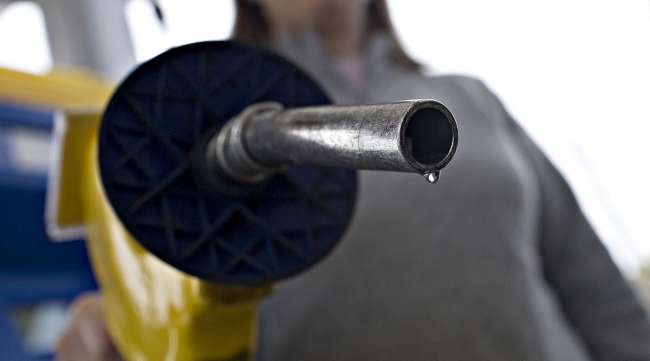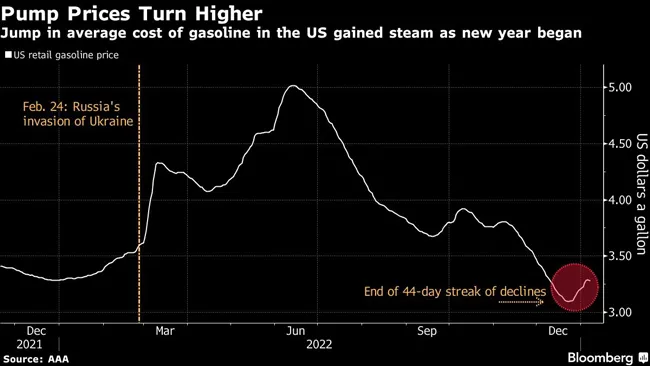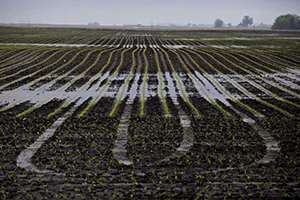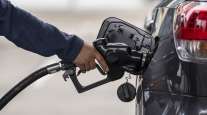Bloomberg News
Gasoline Prices Set to Rise if Corn Belt States Win Fuel Fight

[Stay on top of transportation news: Get TTNews in your inbox.]
Some Americans could end up paying more for their gasoline thanks to a plan by seven Midwestern state governors to boost the use of corn-based ethanol.
Their request is under review by the federal government. If adopted, it could be good news for corn farmers throughout the region, including the politically important state of Iowa.
But it would also force oil refiners supplying the Midwest to provide a specialized gasoline grade and construct new storage tanks and other infrastructure. That has the potential to increase costs, which would likely be passed on to consumers already squeezed by soaring inflation. Prices at the pump are seen rising by at least 2 cents per gallon in affected states, according to a study by consultancy MathPro Inc., though some industry groups say the costs could be much higher, especially if the change is implemented this summer leaving little time to provide adequate inventory.
That risks undoing some of President Joe Biden’s historic efforts to tame runaway gasoline prices, which his administration regards as a major political threat. The average cost of a gallon of regular is now well below the $5-plus peak seen last summer. But prices have been creeping higher again recently, gaining more than 19 cents in a two-week period ended Jan. 6 after a winter storm disrupted oil refining.
It’s the latest example of how Biden’s desire to quash inflation is proving difficult to reconcile with other goals, such as keeping a politically important constituency happy, or his green agenda. He has made repeated pleas to the oil industry to increase output to help guard against surging pump prices, but that has angered environmentalists and even the fossil-fuel producers themselves. U.S. oil refiners have cited a slew of operational and policy constraints, including capacity cuts made during the pandemic, as reasons why they could do relatively little to boost gasoline supply last year when fuel costs jumped.

At the heart of the push to boost ethanol is the special treatment given to E10 gasoline. It’s the most common variety of the fuel in the U.S. and contains up to 10% corn-based ethanol. It has also been granted a federal waiver to exceed a limit on its so-called volatility, which is a measure of how much it evaporates — a phenomenon that contributes to air pollution.
The farm lobby would prefer consumers use E15, which as the name suggests, contains 15% ethanol. But despite having a similar volatility as E10, it doesn’t enjoy the same kind of exemption. That has effectively blocked sales of the higher-ethanol blend across much of the country during the peak summer driving season when elevated temperatures mean speedier evaporation. And while more than 2,800 U.S. gas stations sell E15, the hassle of complying with the summertime limits has deterred other retailers from offering it.
To create a level playing field and give E15 a better chance, the Corn Belt leaders are trying to handicap sales of E10. The governors of Illinois, Iowa, Minnesota, Nebraska, South Dakota and Wisconsin petitioned the Environmental Protection Agency in April to stop giving E10 a partial waiver from air pollution curbs in their states. Ohio Gov. Mike DeWine submitted a separate request later, while the governors of Kansas and North Dakota subsequently rescinded theirs.

What is the outlook for trucking in 2023? How will the industry change with the current government, economic and business trends? Join host Michael Freeze and TT reporters Eugene Mulero and Connor Wolf. Hear the program above and at RoadSigns.TTNews.com.
The White House is reviewing EPA’s draft response, which could be released within weeks.
The EPA has little discretion to completely deny the governors’ request, though the agency can postpone the change for at least a year — and renew the delay for two more — if it concludes there is insufficient gasoline supply.
Refiners and pipeline operators, including Flint Hills Resources and Magellan Midstream Partners, are lobbying the administration to delay the shift until at least next year, arguing a too-fast pivot threatens short-term fuel supplies and an even higher price spike.
“Because it takes time to move from refinery to retail, refiners are generally reconfiguring and adjusting refinery production in February and March to be able to produce summer gasoline,” said Patrick Kelly, with the American Fuel and Petrochemical Manufacturers.
Ethanol supporters insist the oil industry is exaggerating the potential disruption. “These are sophisticated companies that have been operating these systems for decades” or more, said Renewable Fuels Association head Geoff Cooper. “They know how to run multiple products through these systems and how to make changes quickly.”

Water saturates a cornfield in Churdan, Iowa. (Daniel Acker/Bloomberg News)
The EPA already tried using regulation to extend the volatility waiver to E15, but a federal court tossed it out after a legal challenge from oil refiners. And legislation that would enshrine the change in federal law is unlikely to clear Congress anytime soon.
Pipeline systems fully contained within the Midwest and refineries primarily serving the region would generally shift to the new specification, according to an ICF analysis seen by Bloomberg News. But in-region refiners would have to find new markets for butane and other cheap, volatile hydrocarbons that lower the cost of gasoline.
The change also could isolate the Midwest’s fuel supply from the rest of the country, much like what happens in California — historically home to the highest retail prices in the country — because of its boutique grade. That would make the Corn Belt states, which consultancy RBN Energy estimates account for 10% of total U.S. gasoline demand, more dependent on refiners in the region and create a risk of supply disruptions when facilities undergo maintenance or outages.
Though the Midwest is expected to have more gasoline than it needs this summer, it still frequently relies on the Gulf Coast for swing supplies — as much as 11% of the region’s consumption in July.
Want more news? Listen to today's daily briefing below or go here for more info:




